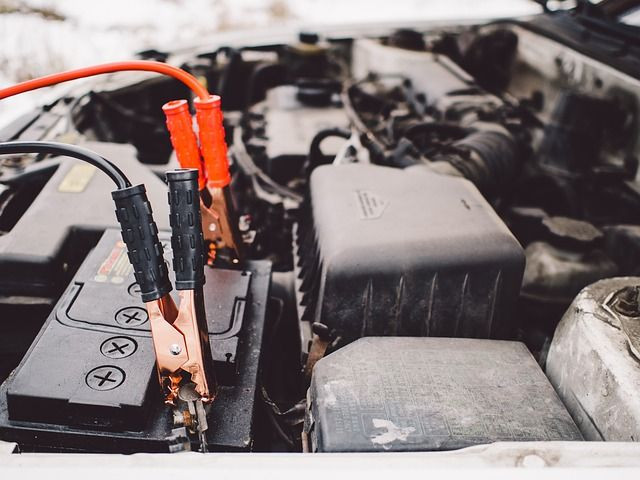California Battery Recycler Puts 12,000 Residents At Risk For Cancer With Arsenic Emissions

A battery-recycling plant on the outskirts of Los Angeles County needs to significantly cut its arsenic emissions in order to protect neighboring residents from an excess risk of cancer.
On May 17, the South Coast Air Quality Management District (SCAQMD) formally notified the plant’s operator, Quemetco, Inc., that its emissions were too high to meet the recommended guidelines for cancer risk recently updated and approved by California’s Office of Environmental Health Hazard Assessment. According to the SCAQMD, the plant itself hasn’t been pumping out any more arsenic than usual — the emissions originate from the plant’s car battery-recycling operations. In 2008, the company even installed an emissions control device that drastically reduced the amount of pollution it released into the air. But last March, the Office concluded the environmental cancer risk from arsenic emissions had been underestimated, largely with respect to infants and children.
“Quemetco has already reduced its emissions during recent years,” said Kurt Wiese, SCAQMD general counsel, in a statement. “The steps that Quemetco must take to ensure even lower emissions will benefit public health, particularly for residents living near the facility.”
Arsenic exposure, in addition to cancer, has been linked to fetal defects and low birth weigh. Strangely enough, though, some limited research has shown it could possibly have a protective effect against breast cancer. A naturally occurring chemical as well as a frequent pollutant, arsenic is found in everything from rice to our drinking water, though rarely in levels dangerous to us.
Before the plant embarks on its clean-up duties, they will have to first notify the 12,000 residents living in and around its location in the City of Industry of the elevated risk within 30 days. According to the air pollution control agency, the plant’s emissions in 2014 represented a cancer burden of 0.66 excess cancer cases over several decades worth of operations. To comply with state regulations, the burden needs to be below .5 cases. Quemetco will have 180 days to draft and develop a plan to reduce emissions, after which it will have up to 3 years to put it into action following approval.
Quemetco, as highlighted by the Los Angeles Times, has several dust-ups over its emissions. Over the last two years, it has been cited for violating regulatory standards concerning another carcinogen, benzene, and it was given a citation for too much arsenic in July of 2014. According to the company, the former incident was an issue of “technical disagreement” over testing methods, while the July citation was an one-day violation.
California’s soil pollution agency, the Department of Toxic Substances Control, has also gone back and forth with Quemetco. After having spent years attempting to secure rigorous lead testing of the soil surrounding its facility, the two agreed to a compromise in October 2015: the company would sample the soil for lead in a quarter-mile radius around the plant, with the agency reviewing the results and expanding testing further if they saw fit. The testing will happen later this summer, according to the company’s proposed plan.
Government organizations such as the Environmental Protection Agency have found evidence of high soil lead levels in the residential areas near the facility as far as back as 1992, though other research hasn’t linked these findings to any increased risk of harm in people.
The company has recently attempted to secure SCAQMD approval for a 25 percent expansion of its production capabilities as well as a switch to a different type of fuel for its facility. Both changes will be vetted to ensure they don’t further increase any environmental risks, however, the agency noted. The SCAQMD will begin a public process to develop an Environmental Impact Report concerning the changes later this year.
The state’s only other battery plant was forcefully shut down last year following decades of pollution violations and its owner, Exide Technologies, agreed to pay at least $50 million to aid in the clean-up effort. The company’s move only came about as part of an agreement with federal officials to avoid any criminal prosecution. Meanwhile, Quemetco boasts of being the cleanest facility of its kind in the world, producing 120 million tons of recycled lead from an estimated 10 million lead-based batteries annually.



























